Astrophotography CamerasCanon AE-1 SLR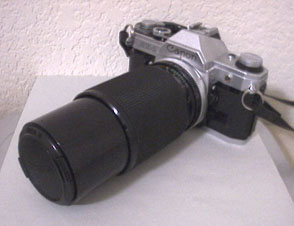
A Good old fashioned SLR. The AE-1 is a nightmare for astrophotography, primarily due to the unremovable focus screen and the battery drain while the shutter is open. There is no solution to the first problem. To deal with the second problem I bought a 6 volt lantern battery and I pipe it directly into the camera during long exposures to spare the expensive camera battery. You will notice that I have an 80-200 mm lens. While 50-130mm is nice for widefield photography, it's nice to have some more zoom capability if I decide to take pictures of nebulas and such. I also have a 2x teleconverter. Logitech Quickcam Pro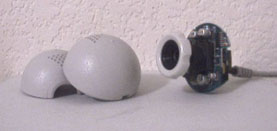
640 x 480 webcam. CMOS sensor, which means it sucks for astrophotography. Basically, it has horrible low-light sensitivity. Doesn't matter anymore since it mysteriously stopped working. I probably statically zapped it carrying it around the house. Notice that I removed it from its enclosure so I could mount the bare CCD with the lens removed directly on the telescope (the lens is still in place in this picture however). Philips ToUcam Pro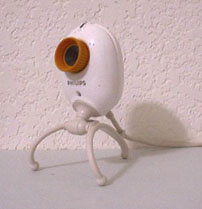
640 x 480 CCD webcam. In the early 2000s, this was the absolute best webcam for astrophotography. Excellent low-light sensitivity. Unfortunately, this camera is no longer manufactured and is almost impossible to locate. As a result, I am very weary of doing a long exposure modification on it because I don't want to risk destroying what is basically an irreplacable camera. Logitech Quickcam Pro 3000, long exposure modified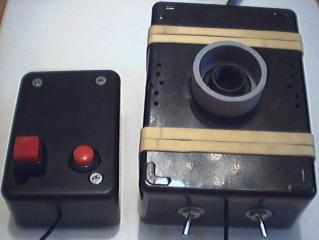
This started out as an off-the-shelf Quickcam Pro 3000. Ordinarily, this camera can't run slower than five frames per second with a maximum shutter time of one fifth of a second, but I did a hardware modification, which involved soldering on the webcam's circuitboard, to turn it into a long exposure webcam. Consequently, I can theoretically take arbitrarily long exposures with this camera now. While the camera is shown with physical switches on a cabled remote control, I later converted it to electronic control, with the switches under the control of a serial port from software such as my own Keith's AstroImager. Philips Vesta 675, long exposure modified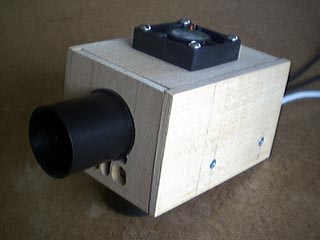
This camera is a Philips Vesta 675 which I have modded in similar fashion to the QuickCam Pro 3000. This mod is a little different though. I don't have a switch on the shutter. Instead it is permanantly disabled and controlled electronically from a computer's serial port (or similar design). Otherwise, the two mods are very similar. Watec LCL-802H, long exposure modified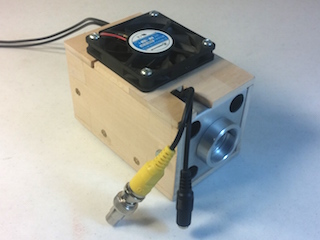
This camera is a Watec LCL-802H which I also modded for long exposures. Similar to the Vesta, shown above, long exposures rely on electronic conrol lines for the shutter and gain. However, unlike the Vesta, this camera doesn't rely on computerized shutter control. If the shutter and gain control lines are left disconnected, then the camera operates normally, as if no mod had been performed. This is a great convenience of course. This camera isn't a webcam unlike the two shown above. It is more akin to a standard security camera of sorts, putting out an EIA monochrome composite video signal. It didn't even come with an enclosure, just the bare circuit board and the CS threaded mount. It has no Bayer filter, and so provides only black and white images, but its 1/2" CCD is very light sensitive and so offers good astrophotography potential. In the end, I didn't do much actual imaging with this camera however. Capturing clean images from the conventional video signal, even with popular video digitizers, turned out to be quite challenging and I didn't pursue the project for very long. |